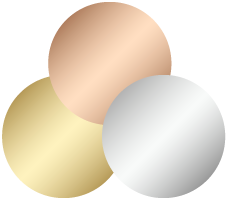White gold jewellery has been a popular choice for many years. We think it’s because of its tone, a sparkling, crisp silver that looks contemporary whatever the setting. It remains the most popular precious metal for US jewellery, and here in the UK it is fast gaining steam as a viable, affordable alternative to platinum jewellery. White gold jewellery provides the perfect setting for diamonds, reflecting their sparkle effortlessly. As such, it is often favoured by modern brides and grooms who opt for the precious metal for their engagement and wedding rings.
What is 18ct white gold?
Gold is usually yellow in colour, but for those preferring a cooler palette, white gold exists to give you the jewellery piece of your dreams. It is made out of 24ct pure gold which is mixed with other white metals, including palladium to give it a shimmering, pale appearance. When white gold is created, it actually has a grey tone, which is plated with rhodium for a sparkling silver finish.





